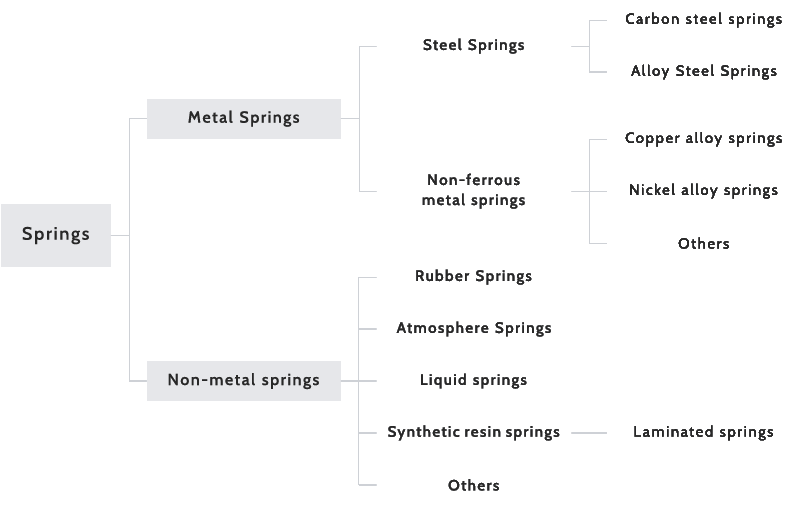Basic Knowledge on Springs
Origins of Springs
An object that is temporarily deformed by a force will try to return to its original shape when the force is removed. All objects are endowed with this property in some form or another. This property is called elasticity, and the effective use of elasticity is the starting point of all springs.
Three Main Characteristics of Springs
Point 1: Deflection and restoration
Springs have the property of deforming when a force is applied and being restored when the force is removed.
The spring constant (force (kgf) required to deflect 1 mm) is a quantitative method of showing the relationship between force and deflection.
Linear characteristics (constant spring constant)
(Example)
-
Commonplace leaf springs and coil springs
Nonlinear characteristics (spring constant changes)
(Example)
-
Unequal pitch spring
-
Taper coil spring
-
Barrel-shaped spring
-
Progressive spring (leaf)
-
Load and empty elliptic spring (leaf), etc.
Point 2: Storing and releasing of energy
Just as the energy absorbed in a bow is released to project an arrow, springs have the function of absorbing and storing energy.
(Example)
-
Bow and arrow
-
Mainspring clock
-
Wind-up toy
-
Automotive suspension springs, etc.
Point 3: Springs have a unique frequency
When a spring is released from a deformed state, the spring's own elasticity generates vibration.
(Example)
Large vibrations that occur when the natural frequency of a spring matches the frequency applied from outside should be avoided.
-
Vibration isolation of press machines, etc.
Good results are obtained when the natural frequency of the spring is no greater than about 1/3 the frequency of the machine
Spring Materials

Metal spring forming
